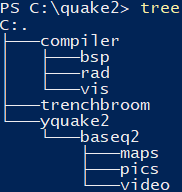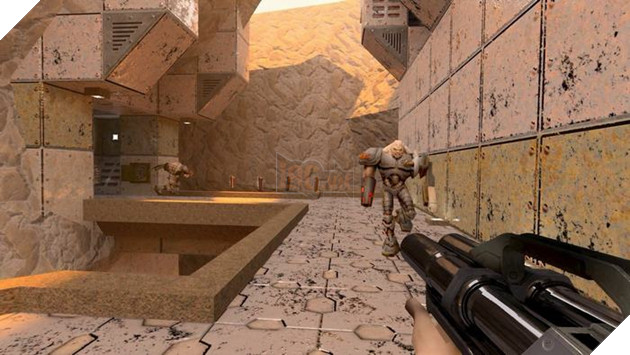
Yquake2 Software Stacks From
Quake II Console Commands Quake 2 Console CommandsYamagi Quake II is an enhanced client for id Softwares Quake II. JDK 11), and other software stacks from Bionic allows. For Xenial users backports of GTK, Qt, KDE, Java (incl. Popular software here: Blender, Chromium, digiKam, FFmpeg, GIMP, GPG, Inkscape, LibreOffice, mpv, Scribus, Telegram, and VLC. A collection of PPAs giving significant upgrades for the past 5+ years of Ubuntu-based releases.

Now this document has become the ultimate reference to consoleCommands with each command and variable having an explanation. This document has been designed to help out all those people whoWant to customize the game to their liking.I decided to write this document because a lot of people were curious about all ofThose console commands. All console commands and variables are identified, documented,Tagged, and classified. Copyright 1997, 1998 JakFrost All Rights ReservedThis is the complete list of console commands, console variables, and command lineParameters for Quake 2.

It is good to know what the information in each field contains and refersTo. Any person who sends me corrections aboutConsole commands or variables will be acknowledged.Below there are explanations to all of the different fields which are used to describeEach command. I appreciate any corrections sent in because I want toMake this document as accurate as possible.
These classificationsAre just here to help you with the syntax recognition and to remove unnecessary syntaxFields. Basically if a user knows that a given variable is classified as aToggle, he won't try to use negative numbers or fractions as input, or if a command isClassified as an operation he will know not to use any parameters. The names of each class are only meant to identify the differentType of a command or variable, and give some insight into it's syntax and what type ofParameters it accepts. The game only distinguishes between commandsAnd variables. These classifications are in no way related to how the game feels about theVarious types of commands and variables.
Syntax: This field only appears for the class of function commands since each of those commandsHas it's own syntax. Further explanation about all of the different types of commands and variablesThat have been classified is included in the section below. The inclusion of this field alsoAllows for the shortening of this document by specifying one syntax for a whole class ofCommands or variables and not having to display the identical syntax for each command orVariable. The information in this fieldClassifies the command or variable based on it's syntax.
Default: This field only appears for the variables. (filename),Designates that a single value should be specified which is described by the phrase insideThe parenthesis, i.e. The convention of using words in parenthesis, i.e.
I decided to write the sentences in this field as if groupedWith an invisible prefix which should be appended to the sentence while reading thisField. This is just a reference field for a quick glance at what theCommand or variable does. It displays a short description ofThe command or variable. Description: This field appears for all commands and variables. The information in this field displays theDefault value for any given variable which can be referenced when it is necessary toRestore that variable to it's original setting.
It displays a long, detailedDescription of the command or variable. Notes: This field appears for some commands and variables. It is better to omitThis prefix in the actual description to save space and to avoid repeating the same partOf the sentence over and over.

A function usually has extra parameters and they are usually necessary forProper execution. Function: A function command performs a single function based on the parameters included for thatOperation. The default syntax for an action is ' +command' or ' -command'.The syntax field is skipped for all action commands. When an action command is bound to a key, the +action isExecuted when the key is pressed, and the -action is executed when the key isReleased.
TheWay that a bitmap variable works is that a value is assigned to each bit. Variables Bitmap: A bitmap variable is able to toggle more than one feature by using a single value. The default syntax for an operation is ' command'.The syntax field is skipped for all operation commands. It does not use any parameters. Operation: An operation command performs a single function in the game every time the command isExecuted.
Allowable values for a bitmap variableInclude integers only. The default syntax for a bitmap variableIs ' variable (value)'. So ifYou want to turn on the features which have values of 4, 8, 32, 256, you would set theVariable to the sum of these values which is 300. To turn onThe desired features all the values representing individual bits are added together.
The default syntax is ' quake2.exe+set variable (value)'. Command line parameters are usually used to enableOr disable a handful of features before loading up the game. The reason forSetting a variable from the command line, is that some variables are write protected onceThe game starts and cannot but changed.
AllowableValues for a register variable include integers, fractions, and negative values. The defaultSyntax for a register variable is ' variable (value)'. Register variablesAre used for numeric data which does not have clearly defined boundaries.
The values for a toggle are usually only 0 and 1.Sometimes there are alternative settings for a toggle, in which case subsequent numbersAre used such as 2, 3, 4, and so on. Toggle: A toggle variable is able to turn a feature on, off, or set it to an alternativeSetting. AllowableValues for a string variable include all numbers and all text characters. The default syntax forA string variable is ' variable "(text)"'.
+lookdown Type: ActionDescription: When active the player is looking down. +left Type: ActionDescription: When active the player is turning left. +klook Type: ActionDescription: When active the keyboard keys bound to +forwardAnd +back serve as +lookup and +lookdown. +forward Type: ActionDescription: When active the player is moving forwards. Console Commands List +attack Type: ActionDescription: When active the player is firing the currentDescription: When active the player is moving backwards.


 0 kommentar(er)
0 kommentar(er)
